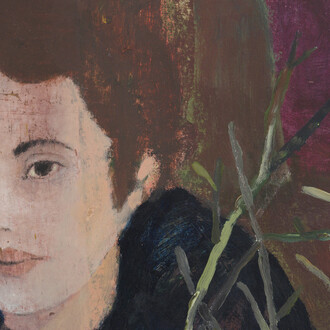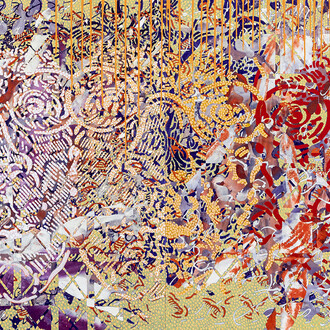The Centre Pompidou is presenting the first exhaustive retrospective devoted to Jeff Koons in Europe, starting on 26 November. This unprecedented exhibition makes it possible to fully appreciate a body of work that has marked the contemporary artistic and cultural landscape for 35 years.
While Jeff Koons has been the subject of numerous exhibitions presenting either precise groups of his work or specific sculptures in a given historical environment, no other exhibition has brought together his work in an exhaustive chronological itinerary covering his entire output. This retrospective contains around 100 sculptures and paintings, and retraces all the landmarks in the artist’s career.
Devised in collaboration with the Whitney Museum of American Art, which is presenting it in New York from 27 June to 19 October 2014, the Centre Pompidou’s exhibition “Jeff Koons : la rétrospective” (Jeff Koons: A retrospective) invites visitors to take a unprejudiced look at the work of one of the most famous and controversial artists of our times, described as “the last of the Pop artists” by Bernard Blistène, director of the Musée National d’Art Moderne and curator of the Paris exhibition.
The works exhibited at the Centre Pompidou, which come from all over the world, have become present-day icons. The aquariums in the “Equilibrium” series (1985), “Rabbit” (1986), “Michael Jackson and Bubbles” (1988) and “Ballon Dog” (1994–2000) have gained immense popularity and made their mark on contemporary visual culture.
The retrospective takes a historical and chronological approach, highlighting the different cycles in the artist’s work from the early pieces reflecting the art of their times to current works that implicitly dialogue with the history of classical art. It highlights the consistency and main themes of the artist’s work, as well as the diversity and richness of his creative power.
The work of Jeff Koons became increasingly established with each new series. Fragile to the point of being derisory, the first “Inflatables” gave way to assemblages seeking a synthesis between Pop Art and Minimalism, like those of the series entitled “The New”.
With the following series, Koons focused on the iconography of a mass culture expressing the American dream and its fantasies. The “Luxury and Degradation” series (1986) duplicated the advertising strategies deployed by major brands, while “Banality” (1988) gave over the lion’s share to popular imagery, mingling childhood dreams and erotic suggestion with different “hits” in the history of art. Koons then concentrated on producing artefacts glorifying the taste of the American middle classes, tirelessly presenting himself as their spokesman.
The subversive, outrageous “Made in Heaven” series (1989–1991) blurred the boundaries between Koons and his character through decidedly pornographic stagings, providing the artist and his muse with material for multiple representations. Koons then became the “corrupting enchanter” of a society where dreams and illusions mingled confusedly with collective ideals and violence.
Having explored monumentality with “Puppy” (1992) and “Split-Rocker” (2000), Koons then moved into the public space. With the “Celebration” series (1994), and notably the celebrated “Balloon Dog”, he achieved a technical peak, and took the transfiguration of trivial objects into accomplished, gleaming, oversize sculptural forms to its apogee.
In fact, the idea of the inflatable is found throughout the artist’s work, as witness the “Popeye” (2003) and “Hulk Elvis” (2007) series, which the artist produced in stainless steel, and the iconic “Rabbit”, which brought him so much prominence.
From “Easyfun” (1999–2003) to “Antiquity” (2009–2014), Jeff Koons has concentrated mainly on the evolving image of painting. Using collage, he assembles heterogeneous elements on the same surface, fragmenting and stratifying them. American stereotypes feature more than ever – wide-open spaces, an excess of industrial food, superheroes and other comic strip characters. Koons mingles these stereotypes with more personal references, ranging from childish graffiti to famous works from Antiquity – as with his latest “Gazing Ball” works (2013), which juxtapose garden ornaments with plaster molds of classical masterpieces.
This exhibition is organized by the Whitney Museum of American Art, New York, in collaboration with the Centre Pompidou, Paris



















